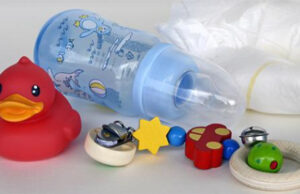Homeowners experience a lot of frustration when the water pressure in kitchen fixtures unexpectedly drops. Imagine turning on the faucet while the sink is piled high with dirty dishes, and all that comes out is drips!
What are the causes and methods of low water pressure in the kitchen sink?
This frustrating situation is caused by a number of distinct problems. In the section below, we go over several things you can check and fix on your own as well as how to tell when it’s a good idea to call a pro plumber.
Also Read: How To Choose A Kitchen Sink?
Table of Contents
Various Factors That Cause Low Kitchen Water Pressure
There are many causes of low water pressure in plumbing fittings, including your kitchen faucet. Among the most frequent causes are:
- Water Line Breaks
Water pressure issues often occur when municipal water supply lines fail. You see the same problem in bathrooms and other water-using appliances around the house if this is the cause of the low water pressure in the kitchen plumbing fittings.
- Filter Clogs
Your water supply’s debris and mineral scale are caught when it runs past a faucet aerator. This gunk accumulates over time and eventually forms a clog that lowers the water pressure.
- Clogged Cartridges
A part of several kitchen faucet designs is cartridges. The cartridge is a disposable part that is designed to be changed. It controls the flow of water through the faucet normally, but when clogged, water pressure appears low.
- Leaks
A drop in water pressure could be a sign that a pipe delivering water to your fixture has sprung a leak. Since this problem has the potential to result in water damage to your property, you need to call a plumber right away to identify and resolve it.
- Errors in Shut-off Valves
Your home includes individual shut-off valves for each sink that stop the water supply to that particular fixture. They are typically found behind or beneath the sink. Low water pressure is the outcome if the shut-off valve is broken or has unintentionally been shifted into a more closed position.
Find the Factors of Low Water Pressure in the Kitchen
A simple fix is frequently available if you can identify the reason why the water pressure in your kitchen faucets is reducing. Homeowners can use the following checklist to assess whether the issue can be fixed with a little perseverance and knowledge:
Activate each water source separately. If the pressure is sufficient everywhere else, your kitchen is the only place with a problem.
Is the hot and cold water pressure low in every room of your house? Calling a neighbor right now is an excellent idea. Your municipal water supply is most likely to be the source of any problems with water pressure they may be experiencing. In this situation, your only option is to report the problem to your water provider. They can be flushing fire hydrants or fixing water mains nearby.
If the only issue you’re having with your property is the hot water, your water heater probably needs to be repaired. The local plumber should be contacted about this problem.
The plumbing in and around your kitchen sink should be examined. A plumbing leak may be to blame for your low water pressure in the kitchen faucet if you see standing or dripping water. This issue can be resolved with a brief call to the plumbing service.
How To Fix Low Water Pressure In Kitchen Sink?
- How to Fix Clogged Cartridge?
The water supply to the kitchen faucet should be turned off before you begin working on the cartridge. Then, depending on the precise model of faucet you have, simply pop the top off the handle or you might need to completely remove it. For every significant type of faucet, there are many excellent videos available.
The cartridge cover can be unscrewed after the handle has been taken off. You may access the cartridge by removing it; it should be ring-shaped. To remove and fix it, you can use pliers, a screwdriver, or any other tool required for the type of faucet you have.
Then, just clean the cartridge like you would the aerator by washing and brushing it. To ensure that they provide a strong seal when you twist the cartridge back into place, check and, if necessary, replace the rubber O-ring seals on the cartridge. Any hardware store should carry a suitable replacement for the seals and the cartridge itself.
- How to Clean An Clogged Aerator?
You’re in luck if the issue is only a clogged aerator after ruling out all other potential explanations. Simply unscrew the aerator, get a toothbrush you don’t mind using for this kind of thing, and thoroughly brush the filter.
If necessary, you can also immerse the aerator in vinegar and water before scrubbing, although the procedure is typically extremely simple. Use pliers if you’re having difficulties taking the aerator apart.
- What Should You Do If the Faucet Has Other Problems?
Depending on the model, there are various ways to disassemble a faucet; you may find online tutorial videos for the majority of models. The faucet can technically become blocked anywhere other than the cartridge or the aerator because it is the main water outflow, although that rarely happens. The low water pressure issue might be resolved by cleaning all of its components, or you might just need to replace the faucet.
- How Should Blocked Water Supply Lines Be Handled?
Stopping the flow of water from the shut-off valve handle under the sink should be done first. After that, put a bucket underneath the sink to catch any potential spills that may remain.
Next, using a wrench or, if necessary, an Allen wrench, turn each nut on the water supply valves. Restart the water and point the lines at the bucket. A plumber is required to fix the water supply pipes if there is no water flowing out of the faucet or the pressure is too low.
- How Should A Pipe Leak Be Handled?
Depending on where they occur, pipe leaks can either be minor or particularly sinister. If you discover a pipe leak inside a wall too late, it could be really serious. Therefore, as soon as you suspect an in-wall pipe leak, you should typically call a plumber.
- How Can A Pressure Reducing Valve Be Adjusted?
Remove the retaining clip, turn the screw cap, and check to see if the water pressure coming out of the water outlets changes to cope with a PRV as we described before. It’s time to call a plumber and get the valve replaced if that doesn’t resolve the low water pressure problem.
- Will A Plumber Be Required To Flush Your Water Heater?
Everyone should flush their own water heater at least once or twice a year as a crucial preventative measure. To that end, it is advisable to engage a plumber to assist you in flushing the water heater this one time if it has become so blocked with sediment that it is reducing the hot water pressure.
What Should I Do If My Hot Water Pressure Is Low But Cold Is Perfect?
Your water heater may be malfunctioning if there is a sink in your house where the hot water pressure is low but the cold water pressure is adequate. In most cases, problems with your hot water heater that result in low water pressure when the hot water is running won’t just affect one faucet in the house. Instead, when the hot water is switched on, it will impact every faucet in the house.
Water heaters accumulate sediment over time if they aren’t flushed frequently, just like faucet aerators do. Water heaters with tanks and those without should be cleansed once a year, or more frequently if the water is particularly hard. Calcium and other types of sediment accumulate in the water over time, and if they aren’t flushed out, they can lower the hot water pressure throughout the house, reduce the water heater’s ability to heat water, and increase energy consumption. It’s definitely time to get your water heater cleansed if you’re using hot water more quickly than previously and your hot water pressure is poor.
A certified plumber can flush the water heater to remedy the issue if sediment accumulation in your water heater is the cause of poor hot water pressure in your sinks. However, flushing might not be effective if it hasn’t been done in five years or more. The water heater may have accumulated too much sediment and debris for flushing to be effective. If your water heater is making popping noises, there has been too much sediment accumulation within for it to be flushed, and the water heater will probably need to be replaced.
This is the reason it’s a good idea to hire a plumber to perform regular maintenance on your water heater in order to prevent plumbing issues that might otherwise arise. Regular water heater maintenance will keep your hot water flowing smoothly, minimize energy use and your gas or electric bills, and extend the life of your water heater.
Summary
Water pressure issues might be inconvenient, but they are typically rather simple to resolve. If the issue is with the municipal water supply, it might take a little longer to remedy it, but you shouldn’t have to do much more than alert the proper authorities.
A leaky pipe is about the only thing that poses a substantial risk. If that’s the reason for the kitchen sink’s low water pressure, a leak in the incorrect spot could have severe consequences for the entire house. In that regard, detecting the decreased water pressure might be advantageous because it serves as a warning sign for the more serious issue. If anything, the issue should be much more minor and simpler to resolve.


